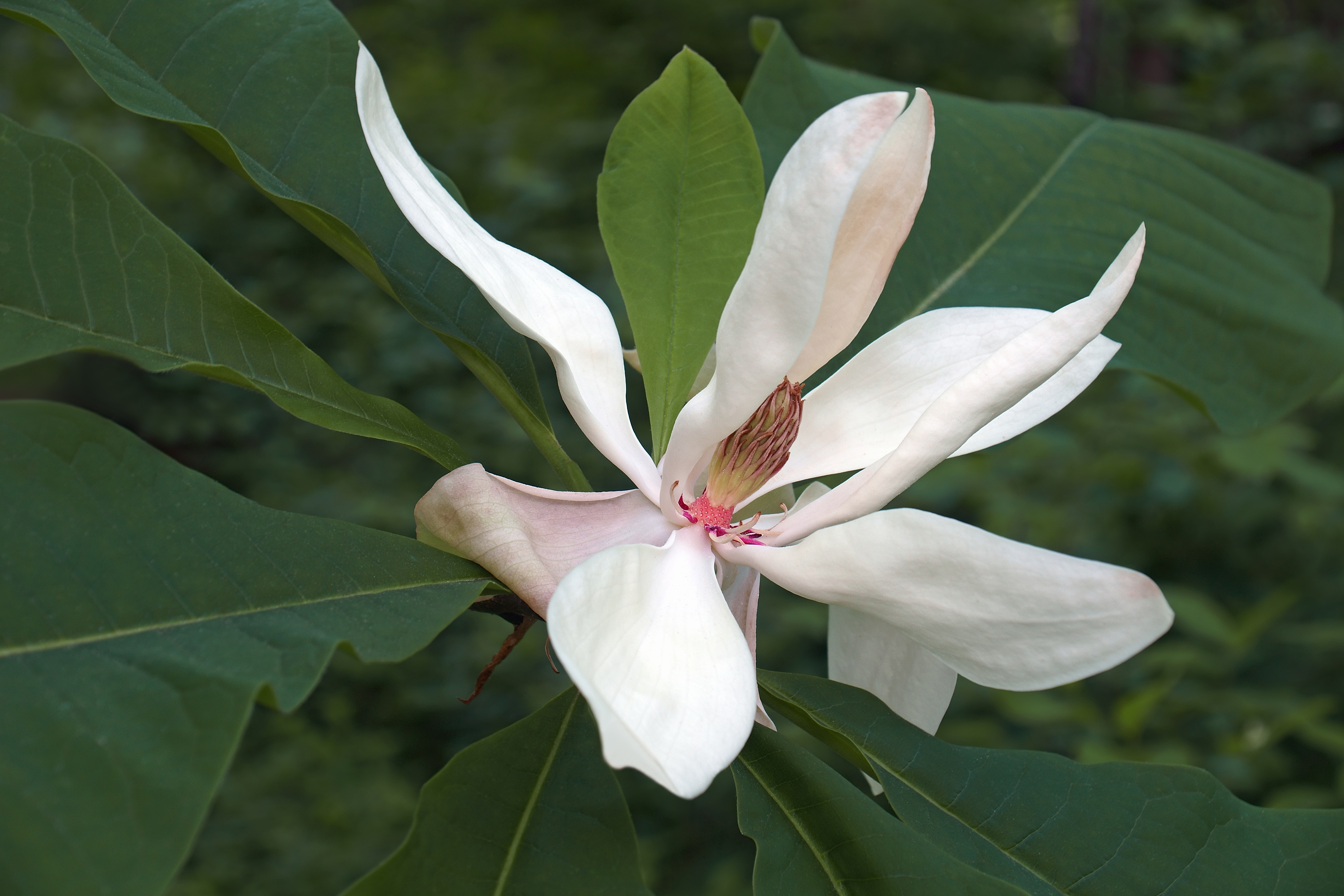Bigleaf magnolia
(Magnolia macrophylla)

Description
Magnolia macrophylla, commonly known as the Bigleaf Magnolia, is a species of flowering plant in the Magnoliaceae family. It is one of the largest and most spectacular magnolias, known for its strikingly large leaves and showy flowers. In this article, we will explore the various aspects of Magnolia macrophylla, from its physical characteristics to its uses and conservation status. Physical Characteristics Magnolia macrophylla is a deciduous tree that can grow up to 30 meters (98 feet) in height, with a trunk diameter of up to 1 meter (3.3 feet). The bark is smooth and grayish-brown, with raised lenticels. The leaves are the largest of any native tree in North America, measuring up to 80 centimeters (31 inches) long and 40 centimeters (16 inches) wide. The leaves are broadly ovate to elliptic, with a pointed apex and a rounded base. They are a deep green color on the upper surface and pale green on the lower surface. The flowers of Magnolia macrophylla are large and showy, measuring up to 30 centimeters (12 inches) across. They are creamy-white, with a fragrant scent. The flowers appear in late spring to early summer, before the leaves emerge. The fruit is a large, oblong-shaped cone, measuring up to 20 centimeters (8 inches) long. It is green when young and turns red as it matures. Habitat Magnolia macrophylla, also known as the Bigleaf Magnolia, is native to the southeastern United States. Its distribution ranges from northern Georgia to southwestern Virginia, and it is most commonly found in the Appalachian Mountains. Within its range, Magnolia macrophylla grows in moist, well-drained soils in deciduous forests and along stream banks. It prefers acidic soils and partial shade. The tree is often found at elevations of 150 to 1,200 meters (500 to 4,000 feet) above sea level. Despite its restricted distribution, Magnolia macrophylla is an important component of the southeastern United States' biodiversity, and its conservation is vital for maintaining healthy forest ecosystems in the region. Uses Magnolia macrophylla, also known as the Bigleaf Magnolia, has a variety of uses, both medicinal and ornamental. Here are some of the uses of Magnolia macrophylla: Traditional Medicine: The bark, leaves, and roots of Magnolia macrophylla have been used in traditional medicine to treat a variety of ailments, including fever, dysentery, and rheumatism. Ornamental: The large leaves and showy flowers of Magnolia macrophylla make it a popular ornamental tree for landscaping. Woodworking: The wood of Magnolia macrophylla is lightweight and has been used to make boxes, furniture, and veneers. Research: Magnolia macrophylla has been the subject of scientific research, particularly for its phytochemical compounds, which have potential medicinal properties. It is important to note that while Magnolia macrophylla has been used in traditional medicine, its use should always be guided by a healthcare professional, as some compounds in the tree may have potential side effects. Additionally, harvesting Magnolia macrophylla from the wild can have negative impacts on its populations and should be avoided. Conservation Status Magnolia macrophylla is listed as a species of special concern in Georgia, North Carolina, and Tennessee, and as a threatened species by the United States Fish and Wildlife Service. The main threats to the species include habitat loss due to logging and development, as well as climate change, which is expected to impact the tree's preferred habitat. Conservation efforts include the protection of existing populations, the establishment of new populations through planting and seedling programs, and the restoration of degraded habitats. The Magnolia macrophylla Foundation, based in North Carolina, is dedicated to the preservation and restoration of the species. Conclusion Magnolia macrophylla is a magnificent tree that is an important part of the southeastern United States' biodiversity. Its large leaves and showy flowers make it a popular ornamental tree, while its medicinal properties have been used for centuries. However, habitat loss and climate change threaten the survival of this iconic tree, making conservation efforts vital for its continued existence.
Taxonomic tree:







